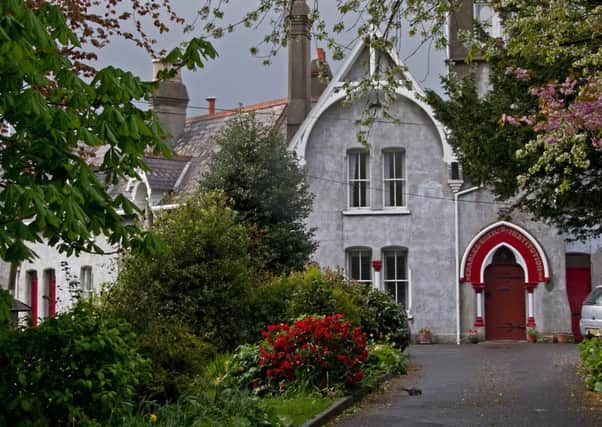Carrick represented at Charles Sheils dedication


The Charles Sheils Charity, which has provided sheltered accommodation to those in need for 150 years, rededicated the grave of its founder at St Anne’s Church, Killough, following a £8,000 restoration and unveiled an interpretative plaque.
Catherine Moore, superintendent at the charity’s Killough complex, has researched the life of Mr Sheils, a Killough native, who was born in 1782 and went on to become a very successful businessman through his mercantile interests.
Advertisement
Hide AdAdvertisement
Hide AdThis was a turbulent time in world and Irish history - the 1798 rebellion and the Act of Union were still fresh in peoples’ memories and the Napoleonic Wars were in full swing. The abolition of slavery was a key political issue and the Irish Famine was just on the horizon.


Mrs Moore explained, “Against this backdrop Charles and his wife Catherine visited Ireland often, and both were very active in the relief of poverty in both Ireland and in England. Charles had a very distinct social conscience and despite his wealth and status, deplored the evils of slavery and the horrendous conditions of the Irish tenant farmer.”
Charles retired from business in 1840 and following his wife’s death in 1850, he returned to Ireland where he died in 1861. He is interred in the family plot in the graveyard of Saint Anne’s Church in Killough village.
Charles was a wise and shrewd investor and together with his business fortune this allowed him to be a very generous benefactor. He continually made substantial contributions to charities and, appalled at the conditions faced by those who fell on hard times in the workhouses, was determined that his work should continue after his death.
Advertisement
Hide AdAdvertisement
Hide AdIn his will, compiled in 1846, he outlined his intentions: “I propose building alms houses...first, to relieve as many as I can of those who from their former lives are entitled to a better provision in old age than the workhouse and secondly, with the hope (should my scheme work as well as I expect it will do) that this little move may be followed by others, who even at this moment are anxious to assist the poor people, but find a difficulty in knowing how it can be accomplished.”
The executors of Charles’ will were successful in bringing his vision to fruition with Charter status being conferred under the ‘Charles Sheils Charity Act’ of 1864 and amended in 1866. Five sets of almshouses, designed by renowned Belfast architect Sir Charles Lanyon (designer of Queen’s University) were instituted – first at Killough followed by Carrickfergus, Dungannon, Armagh and Stillorgan, County Dublin.
Peter Newton Acheson, chairman of the charity and a descendent of Charles’ wife Catherine Newton’s family, added: “Right from the start Charles’ vision was cross-community and non-denominational, in a time when division and suspicion was rife - the charity was incorporated with the Archbishop of the Church of Ireland, the Archbishop of the Roman Catholic Church in Ireland and the Moderator of the Presbyterian Church as Governors of the Charity (almost unique in its inclusive nature) – a spirit of co-operation that continues to this day with representatives of those three churches all attending the service of remembrance.”
He continued: “150 years later, especially with the recent economic recession, we still find there is a strong need for Charles’ vision, and the charity is currently undertaking a wholesale restoration and sympathetic refurbishment programme to bring these listed houses in the five sites up to modern standards, with Killough currently undergoing major works which will bring more houses back into use for those in need.”
Advertisement
Hide AdAdvertisement
Hide AdMr Acheson concluded: “Charles was ahead of his time and his vision for an ecumenical charity which, despite the political and religious upheavals of the nineteenth and twentieth century in Ireland, continues in the form Charles set down in his bequest.
“As a commentator posthumously observed of Charles’ charitable endeavours in 1869, ‘in his prosperity he recollected those who adversity marked out for its own’, and this service marks our thanks to our founder for that vision and is a statement of our intent to carry on that good work.”
Guests at the service included several Sheils residents and board members from Armagh, Dublin, Dungannon, Carrickfergus and Killough.